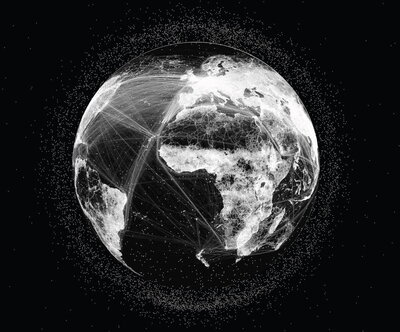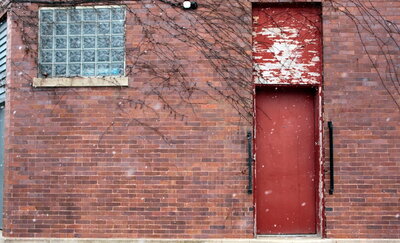On September 20, 2022, Professor David Wilson (GGIS) delivered a Modern Critical Theory lecture entitled "The Advanced Capitalist City: Conceptual Innovations."
David Wilson's articulation of the advanced capitalist city engaged with various important contemporary discourses via an investigation of the nexus of cities, people, and personal and scholarly experiences which shaped his scholarship as an urban geographer. Urban studies scholarship understands "capitalist cities" through Neo-classical, institutional, Neo-Marxist, hermeneutic, post-modern, and post-structural frameworks of analysis. While these frameworks often provide dialectical lenses for viewing urban spaces and the world more generally, Wilson remarked that these theoretical perspectives are informative but restrictive. Established theoretical perspectives have trained scholarly eyes to see the urban world but, in some cases, they have limited our engagement with the empirical urban world. Wilson sheds light on this issue and suggests new ways forward by surveying four recent and innovative conceptual trends in urban theory: (1) the planetary urbanization concept, (2) the rise of Dracula urbanism, (3) people as infrastructure, and (4) the rise of decline machines. These four trends can help us analyze urbanism in new ways, "challenge what we claim to know, [...] provide important conceptual openings in terms of enacting progressive imaginaries, and they point to potential urban policy." (Wilson)
I: The Planetary Urbanization Concept
The appeal of the planetary urbanization concept for Wilson is that it “identifies the need to see urbanization in a new way: as a variegated, centerless, unfolding” (Wilson). Advocates of the planetary urbanization thesis, Neil Brenner and Christian Schmid, argue that the thesis is essential for understanding the most powerful planetary process: urban growth. Planetary urbanism believes in an interconnected world brought about through urbanization and urban growth (and this can prompt us to question whether this emphasis on interconnectivity annihilates the concept of the place itself). Planetary urbanists understand places through spatial differences that are manifestations of growth. For instance, the spatial manifestation of global financial capital is different in Hong Kong than in Lagos. However, these cities are not solely defined by their growth rates.

Important for Wilson’s gesture at the potential for the planetary urbanization thesis are the Lefebvrian ideas of the complete urbanization of society and the simultaneity of concentration and deconcentration. If "...there is no longer anything in the world outside the urban,” then we need a concept that helps us make sense of and connect the processes of uneven development, transnational migrations, and modes of production and communication (Wilson). The planetary urbanization thesis tells us that cities are interconnected but that interconnection does not necessarily imply a center.
To further explain the appeal, Wilson offered two strengths of planetary urbanization. First, the concept prompts us to reexamine the “urban” and destabilize the spatial binary notions of center and periphery, city, and countryside. Second, the concept embraces a concept of the urban that prompts an expansion in the scholarship to see what is happening on the ground. Wilson claimed that everyday reality is a liminal process that extends as a kind of dispersal of fragments that shapes a place. When that dispersal of fragments ends, the multitude of everyday actions, thoughts, desires, and material and political opportunities functions in relation to financial capital circulation.
II: The Rise of Dracula Urbanism

“Frankenstein urbanism” is predicated on the smart city, where human and non-human (artificial intelligence) interactions are the base of urban dynamics. A recent modification of this metaphor is Dracula urbanism. “Beneath the veneer of aristocratic charm, the Count possesses a concealed and dark soul. […] To flourish, he lives off the blood of hypnotized, unwilling culprits to acquire power that transforms people and their ways, and especially important in this is that Dracula also believes is it only through the imposition of death that rebirth and life can begin” (Wilson).
Wilson invoked this form of urbanism to describe how financial debt is blamed on an incurred by ordinary people. While political and economic resources typically drive growth in cities, under the Dracula model, the technocratic seduction of smart ecocity projects creates a parasitic relationship between banks, private funders, and real estate developers. The cost of financial growth is often imposed on poor communities and communities of color. This model of Dracula urbanism brings to mind revanchist cities like those of 19th century Paris wherein the bourgeoisie banished all who were not part of their vision of civic society, targeting and displacing the underprivileged. According to Dracula urbanism, marginalized communities are simultaneously the scapegoats and the sacrificed.
III: People as Infrastructure Notion
One way we might refocus our attention on the everyday is through the interpretation of people as infrastructure (AbdouMaliq Simone, 2004) and the recognition of “ordinary politics” (Asef Bayat, 2013). These theoretical frameworks have global relevance, but their genesis lies in spatio-temporal contexts. Wilson explained that, for Simone, infrastructure does not mean systems of transport, engineering, or sewage, but rather, the networking among people and the resulting solidarities. Ordinary people's experience-based resistance and protest is not necessarily explained by the planetary framework of coordinated actions because that excludes the fact that resistance is often incorporated into the ordinary everyday-ness and that, in itself, has explanatory power.

To give an example of how such networking functions, Wilson drew upon his work on blues clubs in Chicago’s South Side. Blues clubs have a long history as community sites for music and expressions of Black experience in America. However, these places have been historically marginalized by racism and neo-colonialism and, more recently, real estate interests and gentrification programs seek to capitalize on and transform such places by valorizing land and property, effectively pushing out the residents. Patrons of blues clubs expressed their resistance to such transformations through tactics including painting their bodies blue, thereby using performance itself as a mode of resistance. These subaltern insurgencies are propelled by the idea of micro-politics in provincialized space. However, such forms of everyday resistance are not necessarily multiscale, and thus do not conform to the planetary model.
IV: The Rise of Decline Machines

The final innovative conceptual model that can help us analyze urbanism is new ways, according to Wilson, is a rethinking of decline. Drawing on Harvey Molotch’s work on the urban growth machine, Wilson explained, “The growth machine notion explains city development in the post-Fordist period through the power of pro-growth alliances (builders, city officials, city planners). The notion of decline machines changes things up. It centers two contesting groups—those who want to intensify the value of land [and] those who want to make a decent life on land—and moves beyond the narrow view that decline is […] simply neglected or discarded physical entities. It sees decline as a powerful resonant imagery that is humanly deployed rather than decline as passive and inert” (Wilson).
By drawing on exemplary cases, like Detroit and Flint, Wilson traced real-estate interventions like the remodeling and valorizing of downtown urban centers to their unfortunate and foreseeable end: the displacement of longstanding African American and Latino residents. “Downtowns" of American cities emerged as the symbol of prosperity—a symbol that was used to attract more capital investment. Wilson critiqued the active role of city planners in using the imaginary of urban decay to propel new urban development and remarked that while decline is generally thought of as the antithesis of growth, we see in these exemplary cases how decline is mobilized to generate new investment.
Wilson’s lecture dealt with complex and different urban dynamics, juxtaposing different theories of urbanism, from planetary theorists to strong advocates of provincialized urbanism which focused on micropolitics. In his closing, Wilson reminded the audience that his lecture addressed just four possible models to appeal to in a much larger suite of theoretical models of urbanism. In this way, he simultaneously invites us to join him in pursuing those four models while paving an open and inclusive path for reanalyzing urbanism.